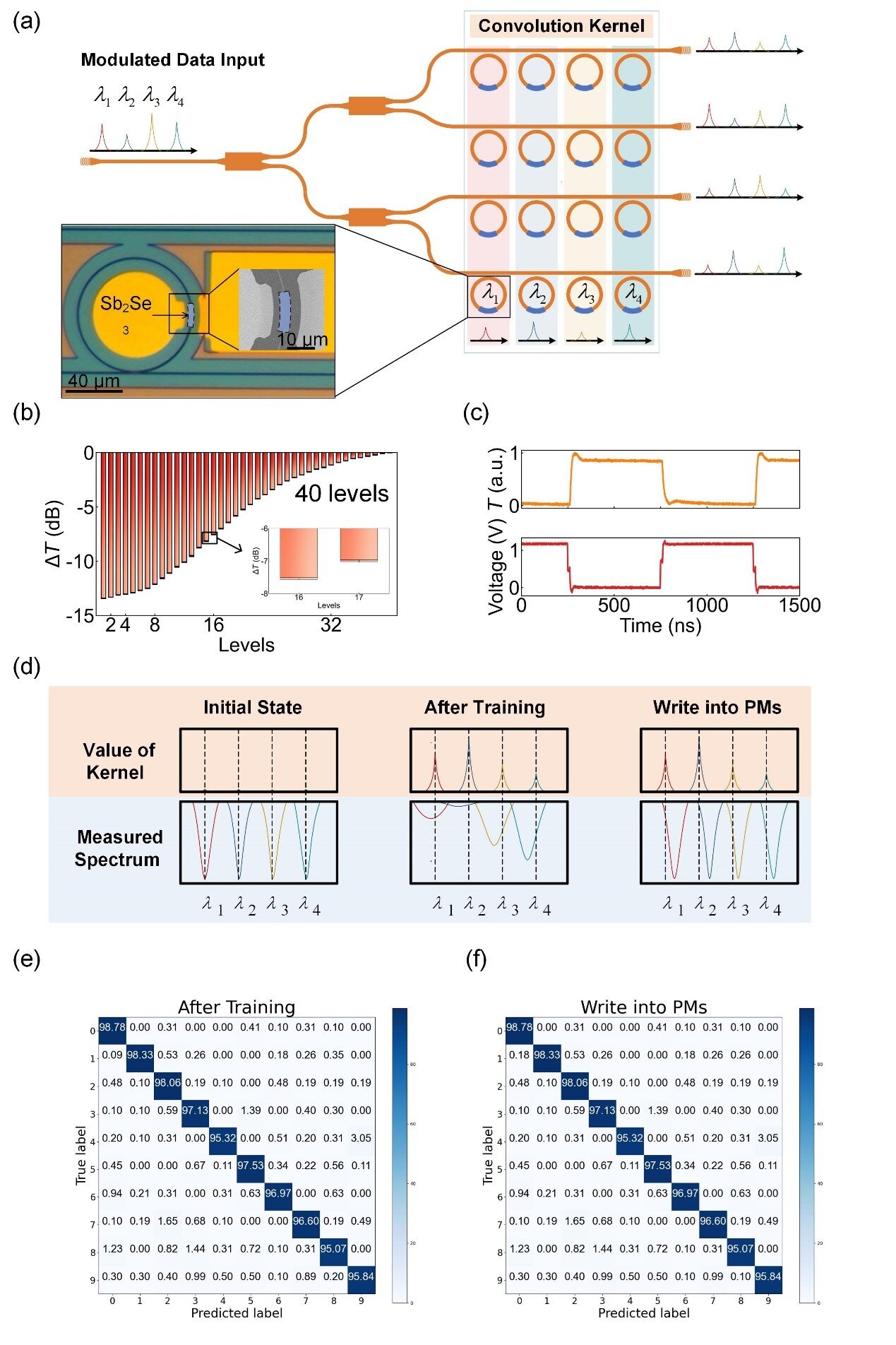With the increasing demand for computational power driven by technologies like autonomous driving and computer vision, the field of optical computing has gained significant attention for its high throughput, energy efficiency, and low latency. However, current optical computing chips face challenges in power consumption and size, limiting the scalability of optical computing networks.
The rise of nonvolatile integrated photonics has opened possibilities for achieving in-memory computing in optical computing devices with zero static power consumption. Phase-change materials (PCMs), such as antimonite (Sb2S3), have emerged as promising options for photonic memory and nonvolatile neuromorphic photonic chips due to their high refractive index contrast and reversible transitions. These characteristics make them suitable for large-scale nonvolatile optical computing chips.
However, achieving rapid and frequent switching for online training in nonvolatile integrated optical computing chips remains a challenge. Researchers from Zhejiang University, Westlake University, and the Institute of Microelectronics of the Chinese Academy of Sciences have made a breakthrough in this area. As reported in the journal “Advanced Photonics,” they developed a 5-bit photonic memory capable of fast volatile modulation and proposed a solution for a nonvolatile photonic network that supports rapid training. This achievement was made possible by integrating low-loss PCM antimonite (Sb2S3) into a silicon photonic platform.
The photonic memory utilizes the carrier dispersion effect of a PIN diode to achieve volatile modulation with a response time of under 40 nanoseconds, preserving the stored weight information. After training, the photonic memory uses the PIN diode as a microheater to enable multilevel and reversible phase changes of Sb2S3, allowing the storage of trained weights in the photonic computing network. This leads to an extremely energy-efficient photonic computing process.
Using this photonic memory and working principle, the research team simulated an optical convolutional kernel architecture and achieved over 95% accuracy in recognizing the MNIST dataset. This showcases the feasibility of fast training through volatile modulation and weight storage through 5-bit nonvolatile modulation.
This breakthrough establishes a new paradigm for photonic memory and provides a promising solution for implementing nonvolatile devices in fast-training optical neural networks. With these advancements, the future of optical computing looks brighter than ever before.
More information:
Maoliang Wei et al, Electrically programmable phase-change photonic memory for optical neural networks with nanoseconds in situ training capability, Advanced Photonics (2023). DOI: 10.1117/1.AP.5.4.046004
Citation:
Harnessing the power of light: Advancements in photonic memory for faster optical computing (2023, July 31)
retrieved 1 August 2023
from https://phys.org/news/2023-07-harnessing-power-advancements-photonic-memory.html
This document is subject to copyright. Apart from any fair dealing for the purpose of private study or research, no
part may be reproduced without the written permission. The content is provided for information purposes only.
Denial of responsibility! TechCodex is an automatic aggregator of the all world’s media. In each content, the hyperlink to the primary source is specified. All trademarks belong to their rightful owners, and all materials to their authors. For any complaint, please reach us at – [email protected]. We will take necessary action within 24 hours.

Jessica Irvine is a tech enthusiast specializing in gadgets. From smart home devices to cutting-edge electronics, Jessica explores the world of consumer tech, offering readers comprehensive reviews, hands-on experiences, and expert insights into the coolest and most innovative gadgets on the market.


